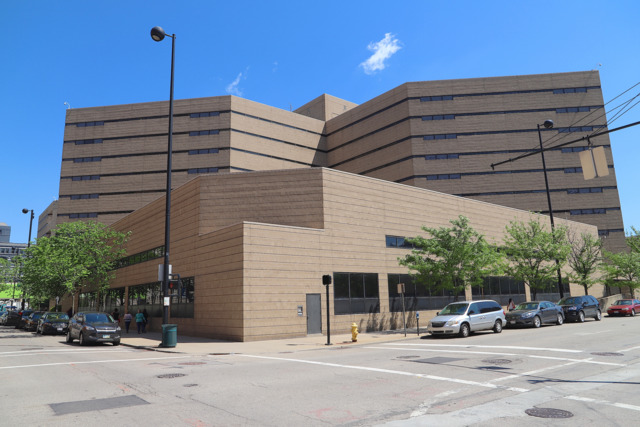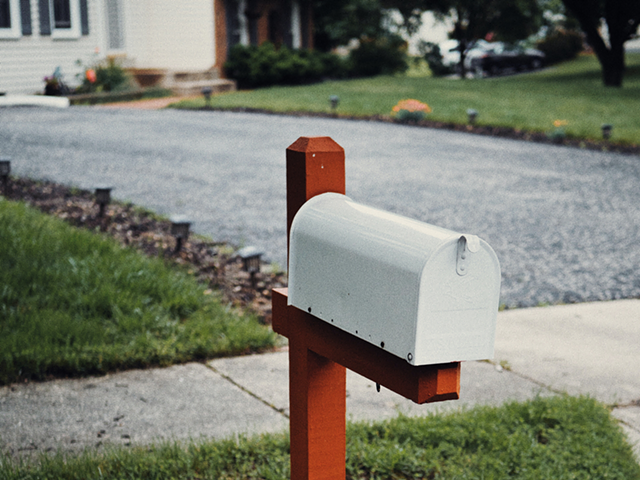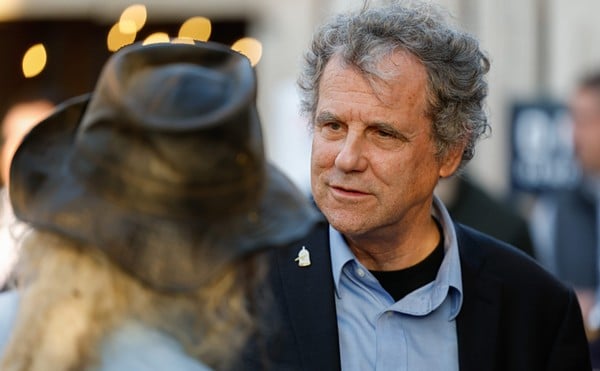The pandemic coronavirus that causes COVID-19 has dramatically changed a number of elements of our daily life — some obvious to almost everyone, others more hidden.
One big change that has come about recently in Greater Cincinnati is the number of inmates in the Hamilton County Justice Center.
This time last month, there were more than 1,200 people in the county jail downtown, Hamilton County Sheriff Jim Neil told Cincinnati City Council's Law and Public Safety Committee today. Today, there are 803.
The reduction is a way to diminish the possibility that COVID-19 will spread among the jail's population. That hasn't happened as of yet, Neil says — no inmates or employees have tested positive. But the lower the population, the less likely someone carrying the virus will be there, and the easier it will be to quarantine inmates if it does make it in.
Butler County Jail recently confirmed its first case of the virus in its county jail, a 35-year-old man who has been moved to another facility that has been emptied to care for inmates with COVID-19. The inmate's cellmate has been tested for the virus as well, with results pending.
"My corrections and medical staff have prepared diligently to handle any inmate that tests positive for COVID-19," Sheriff Richard Jones said in a statement today. "We were lucky for a while but rest assured, we will protect staff and inmate populations the best we can to ensure everyone's safety during these unprecedented times."
Ohio's prisons have seen multiple cases of COVID-19 pop up in at least two facilities and at least three inmates at a federal prison in the state have died from the virus.
What happens when the virus reaches Hamilton County's facility has been a big point of concern for inmate advocates and some city officials.
In recent years, the Hamilton County Justice Center (the jail's formal name) has been plagued with overcrowding issues. According to media reports, the jail's population got as high as 1,600 inmates in 2017 — a level that has shown up in reports recently as well.
So how did it get cut almost in half? And should the facility — which has 847 cells — stay that way?
Some Cincinnati City Council members think so.
Neil says that most of the reduction in the jail population came from county judges changing the way they set bond and sentence low-level, nonviolent offenders. Those judges also granted Neil the power to release inmates if he deems it safe to do so. Neil says he's released about 15 people with those powers.
Cincinnati City Council members across the ideological spectrum have asked judges to make these kinds of changes prior to the COVID-19 crisis, and the issues have come up in local judicial races.
Council member P.G. Sittenfeld last year introduced a motion asking city prosecutors not to seek cash bail for nonviolent offenses in the city, and called for Hamilton County Prosecutor Joe Deters to do the same. Council passed that motion last April.
Vice Mayor Christopher Smitherman last year introduced his own effort at local criminal justice reform: a move decriminalizing possession of moderate amounts of marijuana within city limits. Council passed modified marijuana decriminalization legislation in June.
Smitherman, a conservative-leaning independent who chairs the Law and Public Safety Committee, said today he'd like to see judges continue the practices that led to the jail's reduction in population even after the crisis over COVID-19 ends.
"COVID-19 is giving us insight on how our judges can respond during a crisis," he said today. "We've been asking for these reforms for a while now... I pray that they stay with that mindset."
Other council members agree.
"I don't see how we return to what we called normal," Republican council member Jeff Pastor said today. "If the capacity of the jail was 800 and we were housing 1,600, then I don't want us to necessarily go back to that normal. Non-violent offenders shouldn't be locked up in the first place.
"There is nothing fiscally conservative about locking these people up," he continued. "And it isn't make our community safer."
Sheriff Neil acknowledged the shift in paradigm, though it's unclear what it means long-term.
"We're learning what our capability is now in terms of managing the population of our jail," he said today. "It took a virus to make that happen."






